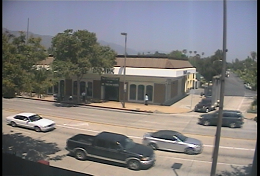Best Video Enhancement Software for Accurate Video Investigation and Forensic Analysis

In today's digital era, surveillance cameras, smartphones, and bodycams capture immense amounts of video footage daily. However, when it comes to law enforcement, legal investigations, or forensic analysis, raw footage often lacks the clarity or detail needed for evidentiary purposes. That’s where video enhancement software, video investigation software, and forensic video enhancement tools come into play. These specialized technologies help professionals extract, process, and clarify crucial visual information hidden in low-quality or compressed video files.
What Is Video Enhancement Software?
Video enhancement software refers to a category of digital tools designed to improve the quality and clarity of video files. These tools utilize complex algorithms to sharpen images, reduce noise, stabilize shaky footage, correct lighting issues, and even interpolate missing data.
Whether it's zooming into a license plate in a blurry traffic camera recording or identifying facial features in a dimly lit scene, video enhancement software helps reveal evidence that might otherwise be overlooked.
Why Use Video Investigation Software in Forensics?
Video investigation software is crucial in modern investigative work, particularly in the fields of law enforcement, legal defense, insurance, journalism, and private investigation. Its applications include:
-
Crime Scene Analysis: Extract key visual evidence from CCTV or mobile phone footage.
-
Facial Recognition Aid: Enhance facial details for better matching or identification.
-
Event Reconstruction: Use timestamp synchronization and motion analysis for recreating events.
-
Vehicle Identification: Clarify license plates or make/model details from surveillance footage.
By using the correct forensic tools, investigators can ensure the integrity and admissibility of the enhanced video in court, which is a major aspect of video forensics.
Key Features of Forensic Video Enhancement Tools
1. Frame-by-Frame Analysis
Forensic software allows analysts to break down footage into individual frames, making it easier to isolate and examine specific moments in high detail.
2. Noise Reduction
Low-light or compressed videos often suffer from heavy noise. Enhancement tools apply denoising filters that preserve crucial visual information while removing distortion.
3. Stabilization
Shaky footage—often captured on handheld devices—can obscure important details. Stabilization tools smooth out erratic motion, making the footage easier to analyze.
4. De-blurring and Sharpening
Motion blur and focus issues can severely degrade footage. Modern software applies deconvolution and edge detection to restore image clarity.
5. Zoom and Scale Enhancements
AI-based zooming and pixel interpolation can magnify sections of footage while maintaining or enhancing detail.
6. Timestamp and Metadata Handling
Accurate timeline reconstruction is critical. Forensic video software reads embedded metadata to authenticate footage and track frame timing.
Benefits of Forensic Video Enhancement in Legal Investigations
Accuracy in Evidence
Enhanced video ensures clearer interpretation, helping juries, attorneys, and judges reach accurate conclusions.
Increased Admissibility
Properly processed video using professional tools ensures chain-of-custody and prevents accusations of evidence tampering.
Time Efficiency
Automated batch processing, motion tracking, and intelligent filters significantly reduce the time required for manual review.
Cross-Device Compatibility
These tools support a wide range of formats from various devices like dashcams, drones, smartphones, and security systems.
Final Thoughts
With the explosion of visual data in modern investigations, the need for reliable video enhancement software, intuitive video investigation software, and high-quality forensic video enhancement tools has never been greater. These technologies are not only empowering law enforcement and forensic professionals but are also helping ensure that justice is based on the clearest, most accurate representation of visual evidence.
FAQs
Q1: What’s the difference between video enhancement and forensic video enhancement?
A: While general video enhancement aims to improve video for aesthetic or quality purposes, forensic video enhancement focuses on extracting evidentiary details in a legally defensible manner.
Q2: Can enhanced video be used in court?
A: Yes, if processed using industry-standard video investigation software that maintains metadata and adheres to the legal chain of custody, enhanced footage is often admissible in court.
Q3: What formats are supported by video enhancement tools?
A: Most professional tools support common and proprietary formats including AVI, MP4, MOV, MPEG, 3GP, and even raw camera formats.
Q4: How long does it take to enhance a video?
A: Time varies depending on footage quality, length, and desired output. Advanced video enhancement software can accelerate workflows using GPU processing and automation.
Q5: Who uses forensic video software?
A: Professionals such as law enforcement officers, forensic analysts, legal teams, private investigators, and insurance fraud examiners frequently use these tools.
- Art
- Causes
- Crafts
- Dance
- Drinks
- Film
- Fitness
- Food
- Giochi
- Gardening
- Health
- Home
- Literature
- Music
- Networking
- Altre informazioni
- Party
- Religion
- Shopping
- Sports
- Theater
- Wellness


